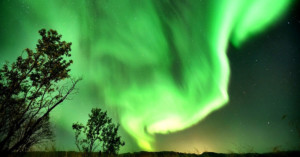
Photos: Dazzling Auroras Light Up the Sky Over Iceland
The Northern Lights have been lighting up the sky over Iceland these past few days, and stunning photos of the auroras have been lighting up the Internet.

The Northern Lights have been lighting up the sky over Iceland these past few days, and stunning photos of the auroras have been lighting up the Internet.
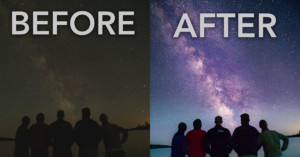
This short Lightroom tutorial will show you how to turn a simple RAW photo of the Milky Way into the kind of bright, vibrant Milky Way shot you're probably used to seeing online—complete with out-of-this-world colors.
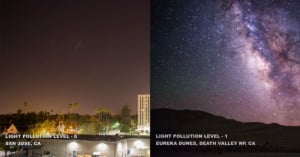
Want to see light pollution changes photos of the starry night sky? Photographer Sriram Murali's new time-lapse short film will show you. Titled "Lost in Light," it shows different locations with progressively lower levels of light pollution.
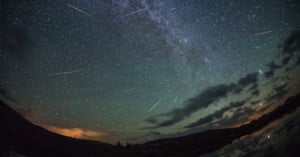
Photographing a meteor shower is more like photographing a time-lapse than traditional still photos. You can never anticipate where or when a meteor is going to streak across the sky.
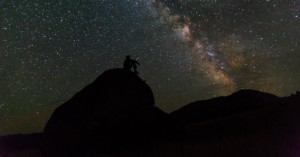
The website Clear Dark Sky has been mentioned in a few tutorials posted here on PetaPixel, but if you've never heard of this incredible weather resource for photographers you're in for a real treat.
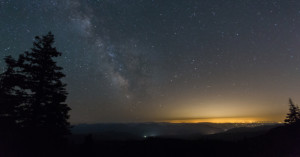
This made us very sad. According to a new report published in the Journal of Science Advances, one third of humanity and approximately 80% of North Americans can no longer see the Milky Way from where they live due to light pollution.
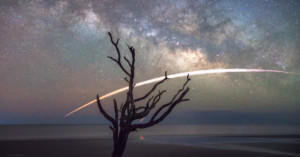
At 1:21am on May 6, 2016, SpaceX continued its run of aerospace brilliance with a night launch of its Falcon 9 rocket, carrying its Japanese communication satellite payload to geostationary orbit.
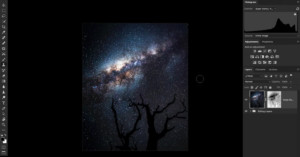
Noise reduction for night sky photos can be tricky, because the algorithms at play often reduce the sharpness of your stars while removing noise in the darkest parts of the sky. In this video tutorial, photographer Dave Morrow shows you how to avoid this issue altogether using a simple, effective editing technique.

If you are willing to get up early or stay up super late, Milky Way season is back in North America! Above is a shot I made on February 14th, 2016, in Sedona, Arizona. This image was taken at 5:45 AM, just prior to sunrise. Something I tried for the first time with this photo is taking 10 consecutive shots of the sky at a higher ISO (5000) and shorter shutter speed (15s), and then stacking the photos, which gives you awesome pinpoint stars with minimal noise.
Here's a walkthrough of how I made the shot.
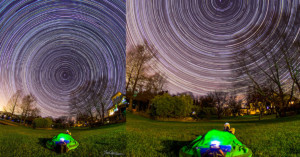
We recently shared a 52-week photo challenge you can do to improve you skills over the course of a year. The challenge for week #1 was "self portrait," and photographer Trevor Mahlmann completed it by creating this eye-popping photo, titled "The Universe At My Feet."
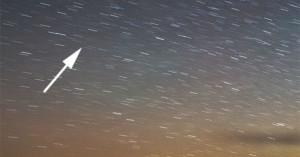
Did you know that you can easily see geostationary satellites by shooting time-lapse photos of the night sky? Reddit user jannne took his camera outside this week and managed to capture a number of satellites in their photos.
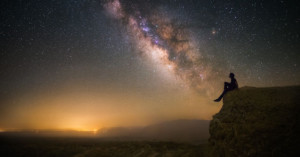
Photographer Michael Shainblum created this 20-minute step-by-step video showing how he goes about post-processing a Milky Way photograph using Adobe Lightroom CC.
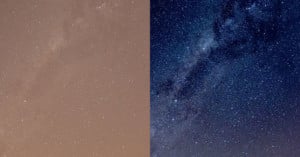
Adobe's new Dehaze slider has been wowing photographers since it was launched for Lightroom and Adobe Camera RAW last month. We've seen what it can do for haze, rainy days, and blizzards, but there's yet another interesting application: enhancing photos of the starry night sky.
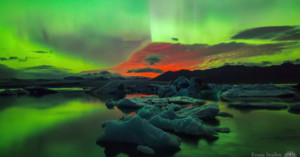
Our sun goes through a solar cycle with an average length of 11 years, and the period of greatest solar activity during each cycle is called the solar maximum. Photographer Henry Jun Wah Lee visited Iceland during the latest solar maximum and shot photos for this dazzling time-lapse film titled "Apotheosis."
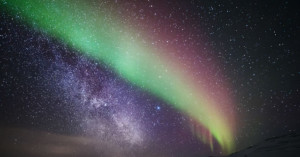
Finnish photographer Tiina Törmänen wanted to capture how small and fragile humans are in the unfathomable expanse of space, so she shot a series of stunning self-portraits showing her silhouette dwarfed by a backdrop of stars and the Northern Lights. The series is titled "Wanderer."
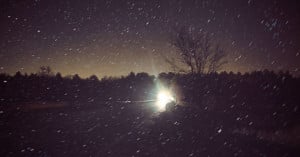
This starry double exposure-style photograph was made using a single long exposure. Photographer Ted Schiele was 190 seconds into a long exposure photo of the night sky when he heard a car coming down the road. He then pointed his camera down towards the car and exposed the camera for another 13 seconds as it approached.
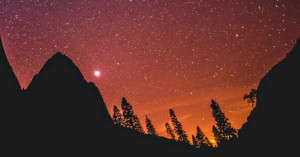
I was in the middle of Yosemite during the "Blood Moon" lunar eclipse on April 4th, 2015. Here's the story of the cool experience I had shooting it.
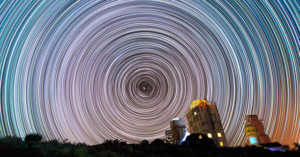
Polish photographer Bartosz Wojczyński pointed his camera straight at the north celestial pole and exposed his camera for a total of six hours. The photograph above is what resulted.
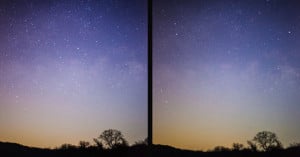
February has brought back the galactic core of the Milky Way into the sky. It is now rising in the east just before sunrise. Each week it will rise a little bit earlier in the night.
I have a trip planned for this spring and have been thinking about some of the shots I want to do. One of them is one where I think a lens longer than the 24mm might be useful to really bring some mountains and the Milky Way together.
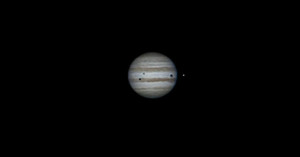
A few days ago I was lucky enough to capture Jupiter’s triple moon transit right from my driveway in Denver.
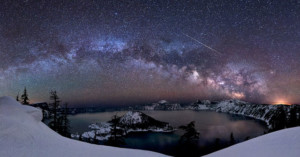
In 2013, photographer Brad Goldpaint and his wife Marci quit their day jobs, sold all of their possessions, and began living out of a motorhome while traveling through the Western United States. Their new career was teaching photography workshops while educating the public about the damaging effects of light pollution.
As the duo moved from place to place through some of the nation's most pristine wilderness areas, Goldpaint spent countless nights out in the dark, capturing long exposure photos over many hours with his camera gear. The images have since been put together into an independent stop-motion film titled “Illusion of Lights: A Journey into the Unseen.” Above is the film's trailer.
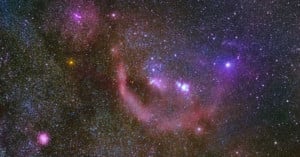
Here's a tutorial that will teach you how to photograph and process one of the most colorful parts of the night sky, the Orion constellation. It will walk you through all the steps of planning, shooting, and processing a photograph of Orion and the colorful features in it.
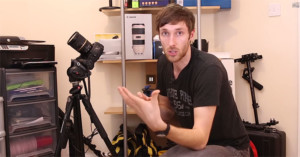
UK-based videographer Cal Thomson recently got into astrophotography and creating time-lapses of the …
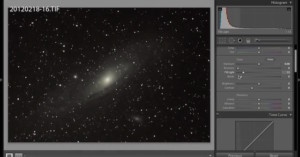
In astrophotography, a star tracker is a piece of gear that compensates for the Earth’s rotation so you can take sharp long exposure photographs of the night sky.
Unfortunately, not everyone can get their hands on one of these, and so we've dug up this awesome tutorial by astrophotographer Forrest Tanaka on how to capture impressive astrophotography images without a star tracker.
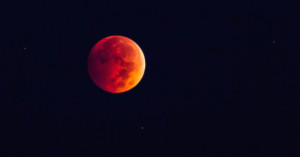
Ever since I’ve owned a camera I’ve wanted to take photos of the night sky. When I first got a DSLR camera 5 or so years ago I thought getting decent shots wasn’t very likely with the inexpensive gear I had and it was something best left to the pros. It was only after I became comfortable with the manual mode on my camera that I realized that shooting at night was completely doable.
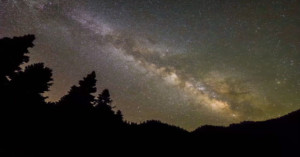
If you enjoy gazing up at the heavens and being in awe of how expansive the universe is, then here's a time-lapse project you have to check out. It's a beautiful time-lapse of the Milky Way by Greek photographer Konstantinos Vasilakakos (be sure to watch it in high definition).
While it's not radically different from other Milky Way timelapse out there, it does a great job at capturing the scale of the night sky.
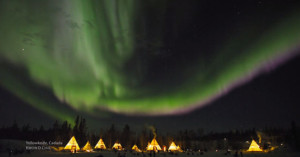
The Aurora Borealis (AKA Northern Lights) often makes an appearance in time-lapse videos of the night sky, but have you ever seen what it looks like in real time? That's what Korean astrophotographer Kwon O Chul was able to capture in the video above.
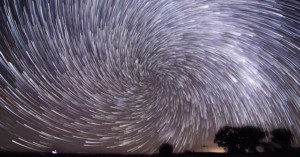
A common technique used in still astrophotography is the creation of startrails, a method by which a photographer overlays multiple long-exposure shots of the stars to create a weaving of constellations. But, as time-lapse photograph and astrophotography have merged in a fairly recent trend, a number of artists have been bringing the idea of startrails to motion-picture, creating what many refer to as ‘vortex startrails.’
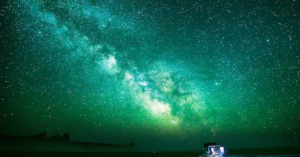
When you think night sky time-lapse, what are the first places that come to mind? Probably somewhere in Iceland, maybe a few spots in Hawaii, but one location that probably doesn't make the list is the country of Kazakhstan.
No, it's not just a punchline from the movie Borat. As photographer Denis Frantsouzov shows you in the mesmerizing time-lapse video above, it's also one of the best places to go if you want to capture the night sky.